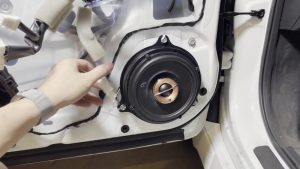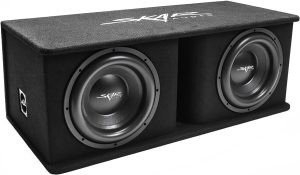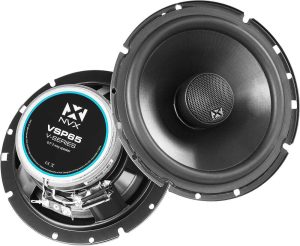Wondering about the ideal fuse size for your 1000-watt car stereo amp? The answer lies in a nuanced understanding of your amplifier’s specifications, power ratings, and potential power spikes. Drawing from personal experiences, this guide aims to demystify the process, empowering you to make informed choices that not only enhance your car audio experience but also protect your system. Let’s delve into the intricacies of fuse selection and navigate the path to optimal performance.
Contents
Understanding Your Amplifier
Your amplifier’s power ratings and specifications serve as the foundation for the entire process. Exceeding these limits can be detrimental, impacting both the quality of your audio output and the overall lifespan of your amplifier. I’ve learned from firsthand experience that respecting these limits isn’t just a recommendation but a necessity for a lasting and powerful car audio setup. A mindful approach to your amplifier’s capabilities ensures that you extract the best performance while avoiding potential pitfalls.
Importance of Fuses in Car Audio Systems
Fuses play a pivotal role in the protection of your car audio system. Acting as a barrier against overcurrent, the right fuse prevents potential damage to your amplifier and associated components. Trust me when I say that dealing with a blown fuse is a far more affordable solution than replacing an entire audio setup. Understanding the critical role fuses play in your system’s safety and longevity is fundamental to creating a robust and reliable car audio experience.
Calculating the Right Fuse Size
Let’s walk through the process of calculating the right fuse size with a practical example, using a 1000-watt amplifier as a reference. This step-by-step guide will help you apply the principles discussed earlier to your specific car audio setup.
- Amperage Ratings and Power Calculations: Start by checking your amplifier’s specifications to find the ampere ratings. Suppose your 1000-watt amplifier operates at 12 volts. Using the formula P=VI, where P is power in watts, V is voltage, and I is current, you can calculate the current (I) flowing through the amplifier.
I (amplifier)=P/V=1000/12=83.33 amps
- Fuse Size Relationship with Amplifier Wattage: Now, apply the guideline of allocating 10-15% more amperage than the amplifier’s requirements. Let’s use a 15% safety margin for this example.
I (fuse)=1.15× I(amplifier)=1.15×83.33=95.83 amps
So, you should choose a fuse with an ampere rating close to 95.83 amps.
- Common Mistakes to Avoid: Be cautious not to base your fuse selection solely on the amplifier’s maximum power (peak power). If the amplifier’s RMS power is, for instance, 800 watts, use this value in your calculations instead of the higher peak power. In our example, we’ve considered the continuous power (RMS power) of the 1000-watt amplifier.
- Consideration of Additional Factors: Factor in any additional components in your setup, such as multiple amplifiers or power-hungry accessories. Suppose you plan to add another 500-watt amplifier to your system in the future. Consider this in your calculations to ensure the chosen fuse size is adaptable.
Putting It All Together:
Let’s summarize the calculation for our example:
- Amplifier Power (P): 1000 watts
- Amplifier Voltage (V): 12 volts
- Amplifier Current I (amplifier): 1000/12=83.33 amps
- Desired Fuse Current I (fuse): 1.15×83.33=95.83 amps
In this scenario, you would ideally choose a fuse with an ampere rating close to 95.83 amps. Always round up to the nearest available fuse rating to ensure proper protection.
Factors Influencing Fuse Size
Consider various factors when selecting a fuse, including peak vs. RMS power, impedance, and speaker configurations. Ignoring these variables can result in an inadequate fuse size, compromising the overall performance of your system. Additionally, accounting for potential power spikes is crucial to ensure that your chosen fuse can handle occasional surges without sacrificing its protective function. It’s a holistic approach that accounts for the dynamic nature of car audio systems and provides a comprehensive solution.
Step-by-Step Guide to Choosing the Correct Fuse
- Assessing Amplifier Specifications: Start by thoroughly reviewing your amplifier’s specifications, paying close attention to power requirements and manufacturer recommendations.
- Calculating Fuse Size: Utilize provided ampere ratings and power calculations to determine the appropriate fuse size. Precision is key to avoiding discrepancies that may compromise the effectiveness of the fuse.
- Considering Additional Factors: Account for any additional factors like multiple amplifiers, power-hungry components, or potential future upgrades to ensure a comprehensive fuse selection that anticipates your system’s evolving needs.
Recommended Fuse Sizes for 1000-Watt Amps
While general guidelines exist for different amplifier classes, always check manufacturer recommendations and specifications. Consulting with car audio experts or enthusiasts provides valuable insights based on their experiences. It’s an iterative process that combines industry knowledge with real-world applications, ensuring a tailored approach to fuse selection for your specific setup.
Installing and Testing the Chosen Fuse
Proper installation is paramount for the fuse’s effectiveness. After carefully selecting the appropriate fuse size, ensure it is installed correctly. Following installation, conduct a thorough test run to confirm that the chosen fuse size can handle the amplifier’s power demands without blowing prematurely. This hands-on approach is a critical step in the validation process, providing assurance that your selected fuse is up to the task.
Troubleshooting Common Fuse Issues
If you encounter blown fuses, it’s essential to identify the root cause promptly. Whether it’s a wiring issue, a defective component, or an electrical problem in your vehicle, taking a systematic approach to troubleshooting is crucial. Seek professional assistance if issues persist, as timely intervention can prevent further damage to your car audio system.
Conclusion
In the pursuit of the right fuse size for your 1000-watt car stereo amp, it’s not just about preventing blown fuses; it’s about ensuring a safe and enjoyable audio experience. Respect your amplifier’s specifications, make accurate calculations, and consider all relevant factors. By sharing your experiences and questions with fellow enthusiasts, you contribute to the collective knowledge in the pursuit of the perfect sound system.






